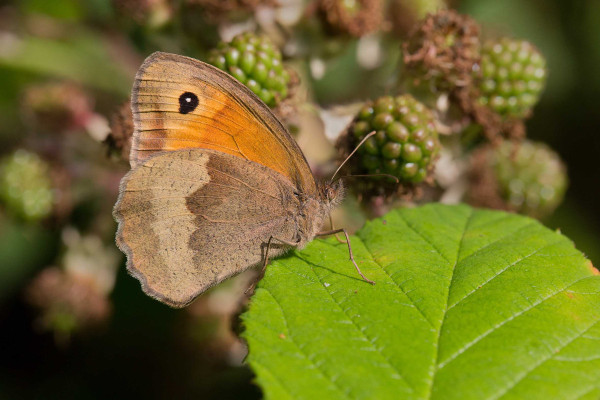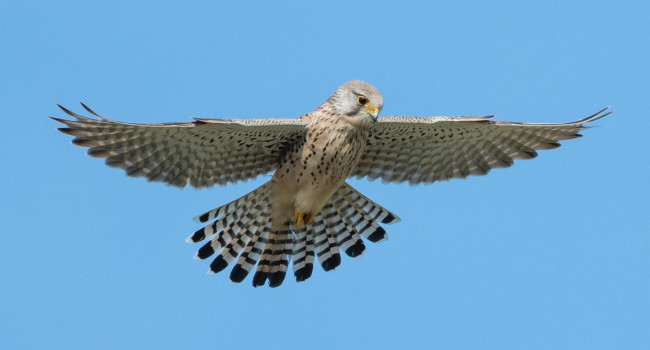Meadow Brown
Maniola jurtina

This species is often confused with both the Gatekeeper and the Ringlet, and there is also some regional variation that may further confuse the novice observer. The colouration is centred around brown and orange-brown, with the males having virtually no orange-brown on the upperwings. Females have orange-brown in the centre of the upperside of the forewings and a dusting of orange brown in the centre of the upper surface of the hindwings.
Both sexes have a black eyespot (with a white centre) on each forewing. When viewed from the underside (or seen with the wings folded), the forewings of both sexes sport black eyespots against an orange background, edged with a dusting of brown. The hindwing is brown of various shades. The strength of the markings and degree of spotting can be very variable.
The tiny, sluggish and distinctly hairy caterpillars are difficult to find during the early stages of life. They overwinter and emerge on mild days from the centre of a grass clump, resuming feeding in earnest with the arrival of spring. It is at this stage, when they are quite a bit larger than they were, that they switch to feeding at night. This is also the time when they are more easy to find, their green colouration, hairy body and tiny white tail tip help to confirm identification. If disturbed during these nocturnal wanderings, the caterpillars will instantly drop to the ground and curl up into a ball.
The Meadow Brown is the most abundant butterfly in Britain according to data from the Butterfly Monitoring Scheme. Over the past 30 or so years, there has been a very small increase in numbers.
Courtship in the Meadow Brown begins with the male finding a potential mate and then enveloping her in an entrancing scent. While this scent may be entrancing for the female, most human observers (some people are more sensitive to the scent than others) would describe it as smelling like old socks or a discarded cigar! The pair then alights on some suitable vegetation to mate.
The fertilised eggs ripen and are laid within about four days of mating having taken place. Some of the eggs are placed on a blade of grass while others are simply ejected in flight.







Share this page